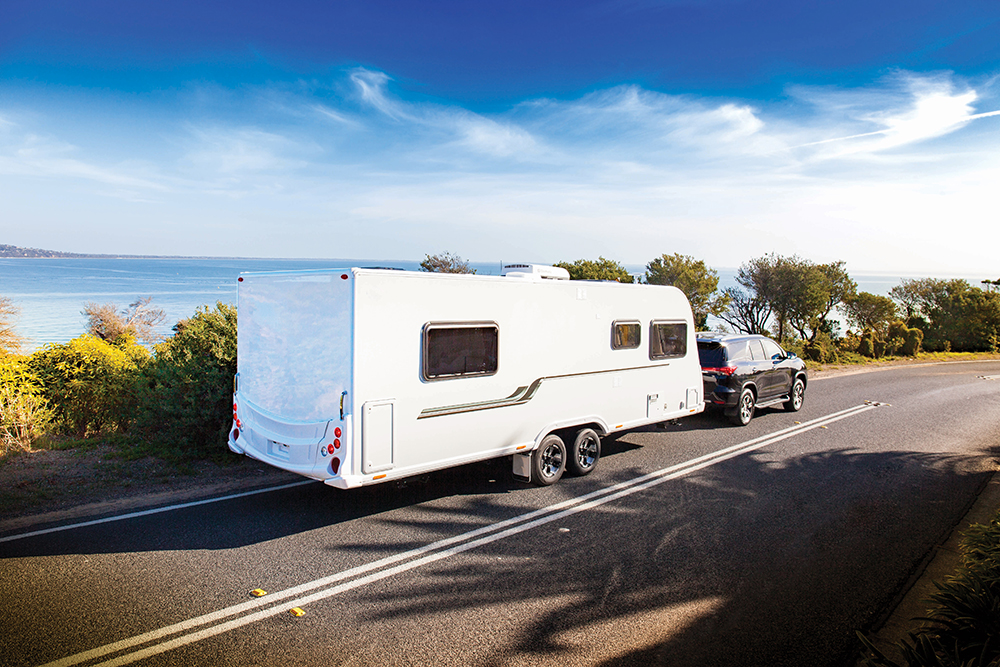Introduction
Brief about Road Tar and Its Effects on Caravan Paintwork
Road tar, a sticky, black substance often encountered during road construction or in freshly paved areas, can be a nuisance for caravan owners due to its tendency to adhere to paintwork. When vehicles travel through areas with loose tar, it can splatter onto the caravan, creating unsightly spots that are notoriously difficult to remove. The tar not only mars the aesthetic appeal of the caravan but can also potentially damage the paintwork if left untreated, as it can attract dirt and other contaminants.
Importance of Safe Removal
Ensuring the safe removal of road tar is pivotal to maintaining the integrity and appearance of your caravan’s paintwork. Utilizing improper methods or harsh chemicals in an attempt to remove tar can result in further damage, such as paint discoloration, peeling, or even corrosion. Therefore, understanding and employing safe, effective techniques and products for tar removal is crucial to preserving the caravan’s aesthetic and structural quality while avoiding inadvertent damage.
Identifying Road Tar
Description and Characteristics of Road Tar
Road tar is a viscous, black material that is used in road construction and repair. It has a sticky nature, which makes it adhere firmly to surfaces, including the paintwork of vehicles. Identifying road tar involves looking for dark, glossy spots or streaks on the caravan’s exterior, which can often be felt as a raised, tacky residue. The substance is notably resistant to traditional washing methods, making it a persistent issue for caravan owners.
How to Differentiate Between Road Tar and Other Substances
Differentiating road tar from other substances like tree sap, bird droppings, or bug splatter is essential to apply the correct removal method. While all these contaminants can be sticky and adhere to the caravan’s surface, road tar typically presents as solid black spots, whereas other substances may vary in color and consistency. Understanding these differences ensures that you employ the most effective and safe cleaning strategy tailored to the specific type of contaminant.

Preventive Measures
How to Minimize Tar Splatter
Minimizing tar splatter involves adopting driving practices and preventive measures that reduce the likelihood of encountering loose tar. This includes avoiding freshly paved roads when possible, maintaining a safe distance from construction vehicles, and driving at lower speeds through roadwork areas. Additionally, applying a high-quality protective wax or coating to the caravan’s paintwork can provide a barrier that makes any tar that does splatter easier to remove.
Regular Maintenance and Checks
Engaging in regular maintenance and checks of your caravan’s exterior allows you to identify and address any tar splatters before they become a more significant issue. This involves routinely inspecting the caravan’s paintwork, especially after traveling through areas prone to tar splatter, and promptly addressing any contaminants. Regular washing and waxing also play a vital role in maintaining the paintwork and preventing tar and other substances from adhering firmly.

Tools and Materials Needed
List of Safe Products for Tar Removal
Choosing safe and effective products for tar removal is crucial to avoid damaging the caravan’s paintwork. Specialized tar removers, which are designed to break down the tar without harming the underlying paint, are typically recommended. Additionally, utilizing microfiber cloths, gentle sponges, and soft brushes can aid in safely lifting the tar once it has been treated with the remover, ensuring that the paintwork remains unscathed.
Alternative Home Remedies and Their Safety
Some caravan owners may opt for alternative home remedies for tar removal, such as using oils, peanut butter, or WD-40. While these methods can be effective, it’s vital to approach them with caution and understand their potential impact on the paintwork. Testing the remedy on a small, inconspicuous area of the caravan first can help ensure that it will not cause discoloration or damage, and always following up with a thorough wash and wax is recommended.
Step-by-Step Tar Removal Guide
Detailed Steps for Safe Tar Removal
A comprehensive guide for safe tar removal should encompass the initial treatment of the tar spots with a specialized remover or chosen alternative, followed by gentle agitation to lift the tar away from the paintwork. This process should be undertaken with care, ensuring that the tar is fully softened before attempting to remove it, and utilizing non-abrasive tools to avoid scratching or damaging the paint. Rinsing and washing the area thoroughly after removal will eliminate any residual remover and tar particles.
Additional Tips and Tricks
Offering additional tips and tricks, such as the optimal temperature and weather conditions for tar removal, can enhance the guide and ensure success. For instance, opting to remove tar in a shaded area or during cooler weather can prevent the remover from evaporating too quickly and provide ample time for it to work on the tar. Additionally, advising on the direction of wiping (e.g., in a lifting motion rather than circular) to avoid spreading the tar and potential techniques for dealing with thicker, more stubborn spots can be invaluable.

Post-Removal Care
Washing and Cleaning Tips Post Tar Removal
After successfully removing the road tar, it’s imperative to wash and clean the affected area meticulously to eliminate any residual remover or loosened tar particles. Utilizing a gentle, automotive-grade soap and a soft sponge or cloth, thoroughly wash the area, ensuring all remnants of the tar and removal products are eradicated. Subsequently, a thorough rinse is necessary to prevent any soap residues, which could potentially affect the paintwork or protective coatings.
Applying Protective Coatings or Wax
Once the caravan is clean and free from tar, applying a protective coating or wax is a prudent step to safeguard the paintwork from future contaminants. A quality wax or sealant not only enhances the aesthetic appeal of the caravan but also provides a protective layer that makes subsequent cleaning and tar removal easier. Ensure to follow the application instructions meticulously, and consider periodic reapplications as per the product guidelines to maintain optimal protection.
Professional Help
When to Seek Professional Help
In instances where the road tar is extensively spread, or if it has been left unattended for a prolonged period, seeking professional help might be the best course of action. Professionals possess the expertise and specialized tools to safely and effectively remove stubborn or widespread tar without damaging the paintwork. Additionally, in cases where the DIY removal methods are ineffective or if the paintwork is delicate (such as with vintage caravans), professional intervention is advisable.
Finding a Reliable Service Provider
Choosing a reliable and experienced service provider is crucial to ensure the safe and effective removal of road tar by professionals. Researching local service providers, reading reviews, and perhaps seeking recommendations from fellow caravan owners can aid in identifying a trustworthy professional. Additionally, obtaining quotes and understanding the processes they employ will ensure transparency and allow you to make an informed decision regarding the care of your caravan.

Environmental and Safety Considerations
Disposing of Used Materials
Proper disposal of used materials, such as cloths, sponges, and any residual tar remover, is essential to adhere to environmental guidelines and ensure safety. Utilizing disposable gloves during the removal process can protect your skin from potential irritants found in tar removers. Additionally, ensuring that used materials are disposed of in accordance with local waste disposal regulations helps in minimizing environmental impact and adhering to legal standards.
Ensuring the Safety of the Environment and the User
Employing eco-friendly tar removers and ensuring that the removal process does not adversely impact the surrounding environment is pivotal. Additionally, safeguarding the user’s health by utilizing protective gear, such as gloves and goggles, especially when using chemical removers, is crucial. Ensuring adequate ventilation if working in an enclosed space and adhering to the safety guidelines of the products used will protect the user and the environment alike.
Case Studies/Examples
Sharing Experiences or Cases Related to Tar Removal
Incorporating real-life experiences or case studies related to tar removal can provide practical insights and enhance the relatability of the article. Sharing instances where specific methods were notably effective, or perhaps where certain approaches resulted in unintended damage, can offer valuable lessons to readers. These real-world examples can serve to illustrate the principles discussed in the article and provide a practical context to the theoretical information.
What Worked and What Didn’t
Delving into the specifics of what worked and what didn’t in the shared case studies provides a practical perspective and tangible takeaways for the reader. Highlighting the effectiveness of particular products or methods, as well as pinpointing potential pitfalls or common mistakes, offers readers a comprehensive understanding. This section can serve as a practical guide, helping readers to navigate their tar removal journey effectively by learning from the experiences of others.
Conclusion
Summarizing Key Points
A well-rounded conclusion should succinctly summarize the key points discussed throughout the article, providing a quick recap and emphasizing the most crucial aspects of safe and effective tar removal. Reiterating the importance of employing safe methods, utilizing appropriate products, and adhering to environmental and safety guidelines ensures that the core messages of the article are reinforced and retained by the reader.
Additional Resources or References
Providing additional resources or references at the conclusion allows interested readers to delve deeper into specific topics or explore further information related to tar removal. This could include links to recommended products, forums for caravan owners, or scientific articles related to the chemical composition of tar and safe removal methods. Ensuring that these resources are credible and relevant enhances the value and reliability of your article.


